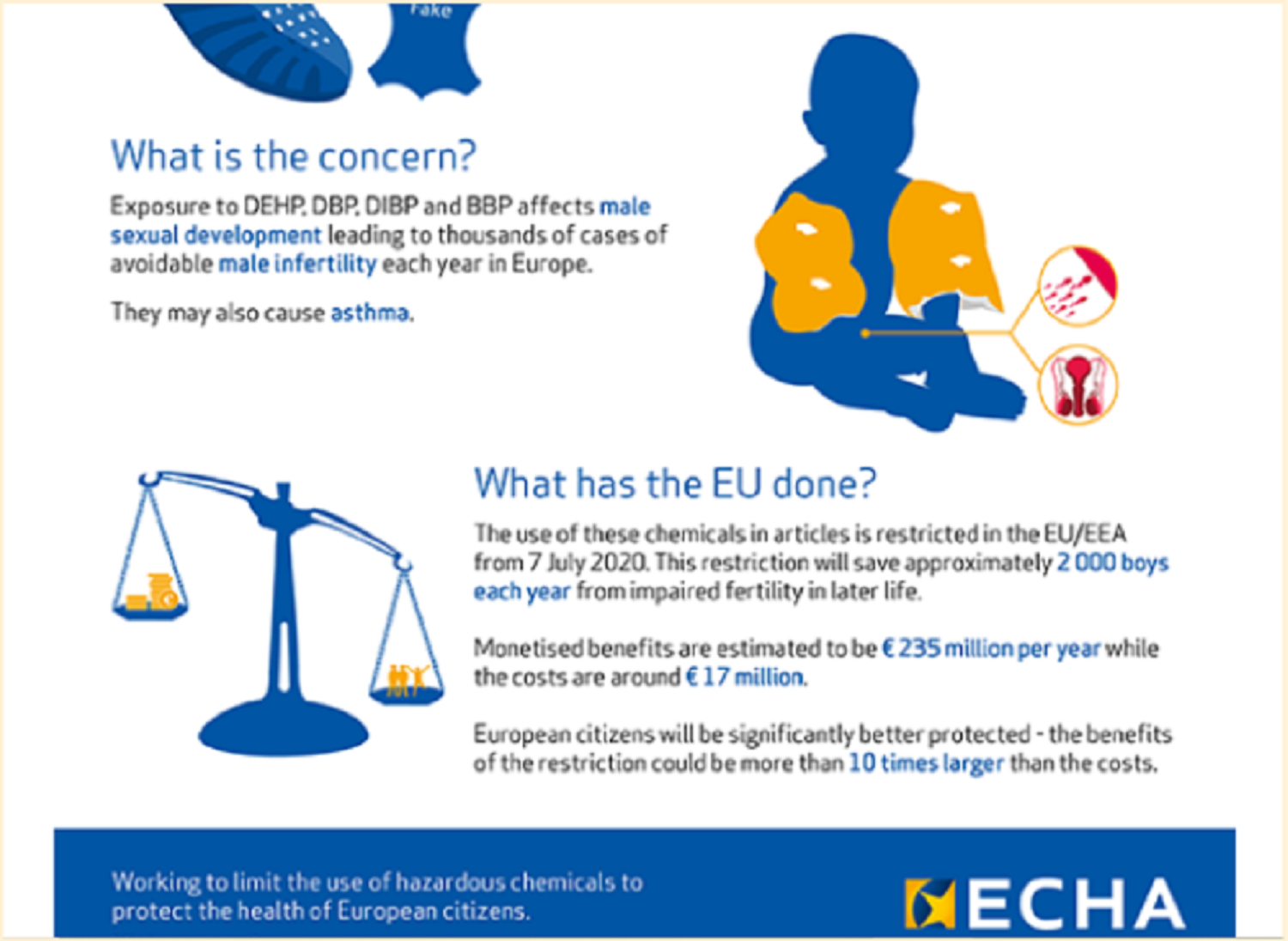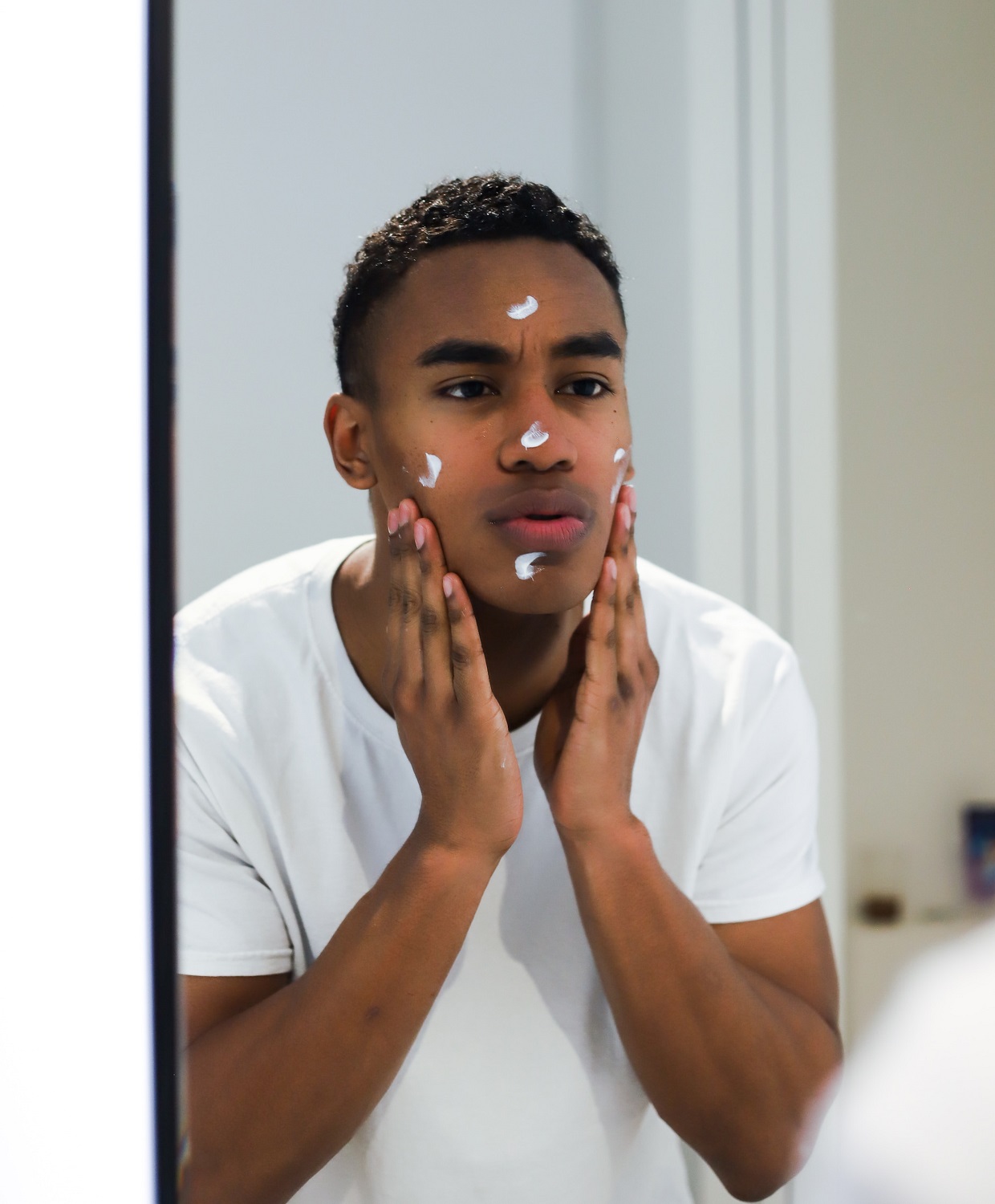Phthalates, also known as everyday chemicals, can be found EVERYWHERE around us (as the nickname suggests) and in almost everything we use on a daily basis. Okay, this is already scary enough and we didn’t even talk about the dangers! Phthalates have endocrine disrupting properties and have been connected to male infertility. As stated below, certain phthalates lead to THOUSANDS of cases of male infertility each year in Europe [1]! The facts mentioned in the picture below really make one wonder: surely it is not worth having better plastics but in turn impair the fertility of our boys!?

Picture source: https://echa.europa.eu/sk/hot-topics/phthalates
Luckily, or well, better say at least, some phthalates have already been restricted to be used since the 1990s due to their toxicity to reproductive health. And the EU has banned some phthalates to be used in cosmetics, yay to that [2]? Some, however, not all. Ah okay, let’s hold on to the yay then.
Since phthalates are to be found in almost everything that has a plastic component, human exposure to them is inevitable even after some restrictions have been put in place. Just think of your plastic cell phone cover for example and how much time you spend holding it in your hand, touching it with your skin. The producer will only specify that it is made out of plastic but it most certainly has also phthalates in it and we do not even realise it. This is still very concerning and that is why Phthalates are included in the list of HBM4EU Substances. HBM4EU is a joint effort of 30 countries, the European Environment Agency and the European Commission and its goal is to spread knowledge about safe handling of chemicals to protect human health in Europe. HBM4EU is also monitoring our exposure to phthalates and looking out for possible negative effects [3].
Sounds good? Well, let’s just see how many more boys will be affected with infertility and then maybe they will think about banning more phthalates? Does not sound so good to me, honestly.

Picture source: unsplash.com
If you are now running to your bathroom to scan your products’ ingredient list for phthalates, you will unfortunately not be able to find them. Another tricky thing with phthalates is that in our cosmetics they are hiding under “fragrance”. Certainly, not all fragrance contains phthalates, but for us consumers it is just impossible to tell. Phthalates are added to fragrance to make it long-lasting, so if your product smells “good” for days or even months – it certainly has phthalates in it.
And they are not just bad for us humans, regular wastewater treatment plants are not really able to clean them out, they are released into rivers and oceans and have an endocrine disruption effect on fish, birds and mammals.
Fact sheet on phthalates
What is it:
- a family of man-made chemical compounds used to make plastics more flexible and harder to break
- we started to use them already in 1920s
Where can we find it:
- difficult to identify because in ingredients’ lists phthalates are often “hidden” under fragrances
- used in everything from sanitary products, household cleaners, food packaging, cosmetics and personal-care products.
Health effect:
- connected to male infertility, reproductive abnormalities and low sperm count
- known endocrine disruptors
- have been linked to increased risk of breast cancer, diabetes, birth defects
- can cause asthma
Effect environment:
- regular wastewater treatment plants (WWTPs) are not designed to eliminate phthalates
- under typical conditions only 18% of phthalates can be removed by WWTPs
- some phthalates are bioaccumulative and toxic to aquatic organisms and may have endocrine disrupting effects
GS tip: Phthalates are definitely not good for us but are very difficult to avoid. The EU is trying to decrease our exposure to these substances. Try limiting cosmetics with fragrance (for which the manufacturer does not specify the fragrance) and overall plastics in your life.
Sources
[1] https://echa.europa.eu/sk/hot-topics/phthalates
[2] https://www.theguardian.com/us-news/2019/may/23/phthalates-everyday-products-toxics-guide
[3] https://www.hbm4eu.eu/hbm4eu-substances/
Fact sheet sources
https://www.mdpi.com/1420-3049/26/22/6966/htm
https://ec.europa.eu/environment/aarhus/pdf/35/Annex_11_report_from_Lowell_Center.pdf
https://www.theguardian.com/us-news/2019/may/23/phthalates-everyday-products-toxics-guide


0 Comments